While light bulbs seem like a simple product, they can be more complicated than you think. What’s a PAR? What is the difference between PAR and MR? In this article we’ll look at everything you could ever need to know about light bulbs so you’re not left in the dark.
Light bulb codes are made up of letters and numbers. The letters refer to the shape of the bulb, where the numbers refer to the base type. However, helpfully, light bulb base types also include letters, so these will need to be read separately.
Light Bulb Shape Codes
| CODE | SHAPE | ALSO KNOWN AS |
|
A |
Arbitrary/Standard household | GLS (General Lamp Service) |
| B | Blunt/Bullet | Often used interchangeably with C |
| BR | Bulged reflector | Often used interchangeably with R |
| C | Candle/Conical | |
| G | Globe | Golf Ball |
| T | Tube/Tubular | |
| R | Reflector | |
| PAR | Parabolic Aluminized Reflectors | |
| MR | Multifaceted Reflector |
Light Bulb Base Codes
The letter in light bulb base codes refers to the type of base, whereas the number typically refer to the size of the base itself. For example E10 is a 10mm screw base, whereas an E11 is an 11mm screw base. For this reason, there are a lot of base codes, so we’ll just look at the most popular bases we sell here at LED Bulbs.
Screw Base
Screw bases will generally start with an E, as they are technically called Edison base bulbs.
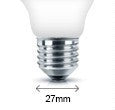
|

|
Bayonet
Bayonet bases are straightforward—designated with a “B” for Bayonet.
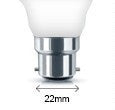
|
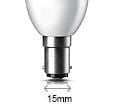
|
Spotlights
Spotlights will typically use GU bases, which stands for General Use. GU5.3 bulbs are often called MR16, but the MR refers to the bulb shape, not the base.

|
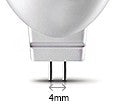
|
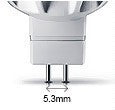
|


 GU10 LED Bulbs
GU10 LED Bulbs
 MR16 LED Bulbs
MR16 LED Bulbs
 GU4 LED Bulbs
GU4 LED Bulbs
 AR111 LED Bulbs
AR111 LED Bulbs
 G9 LED Bulbs
G9 LED Bulbs
 B22 LED Bulbs
B22 LED Bulbs
 B15 LED Bulbs
B15 LED Bulbs
 E27 LED Bulbs
E27 LED Bulbs
 E14 LED Bulbs
E14 LED Bulbs
 R7 LEDs
R7 LEDs
 LED Capsule Bulbs
LED Capsule Bulbs
 Golf Ball LED Bulbs
Golf Ball LED Bulbs
 LED Spotlights
LED Spotlights
 LED PAR Reflectors
LED PAR Reflectors
 GLS LED Bulbs
GLS LED Bulbs
 Candle LED Bulbs
Candle LED Bulbs
 LED Under Cabinet Lighting
LED Under Cabinet Lighting
 LED Tubes
LED Tubes
 LED Battens
LED Battens
 PL LED Bulbs
PL LED Bulbs
 LED Globe Bulbs
LED Globe Bulbs
 LED Floodlights
LED Floodlights
 Highbay Lights
Highbay Lights
 High Bay LED Bulbs
High Bay LED Bulbs
 LED Bulkheads
LED Bulkheads

 T8 LED Tubes
T8 LED Tubes
 Emergency Lighting
Emergency Lighting
 Site Lighting
Site Lighting
 Integrated LED Downlights
Integrated LED Downlights
 Non-Integrated Downlights
Non-Integrated Downlights
 Non Integrated Luminaires
Non Integrated Luminaires
 LED Wall Lights
LED Wall Lights
 LED Walkover Lights
LED Walkover Lights
 LED Garden Lights
LED Garden Lights
 Home Security Cameras
Home Security Cameras
 Home Security CCTV
Home Security CCTV
 Home Security Alarms
Home Security Alarms
 Doorbells
Doorbells
 Cabling & Accessories
Cabling & Accessories

 Sockets
Sockets
 Dimmer Switches
Dimmer Switches
 Light Switches
Light Switches
 Time Controllers
Time Controllers
 Downlight Accessories & Bezels
Downlight Accessories & Bezels
 LED Drivers
LED Drivers
 600 x 600 LED Panels
600 x 600 LED Panels
 1200 x 600 LED Panels
1200 x 600 LED Panels
 Mode
Mode
